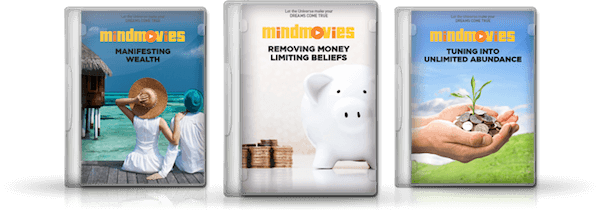Who has a healthier body: the person who exercises once a year, or the person who exercises daily?
Everyone knows one of the keys to unbreakable health is regular physical activity. But not as many realize that adopting a gratitude mindset also requires a similar process.
The rewards of expressing gratitude are well documented, and stretch across our health, relationships, careers and even finances.
In a recent experiment, Professor of Psychology Dr. Robert A. Emmons even found that people who express gratitude regularly are on average 25% happier!
Consistency is the key to enjoying these benefits. In fact, many of the world’s top peak performance and behavioral change experts now think of a gratitude mindset as a ‘muscle’: the more you focus on it, the stronger it gets.
A 2015 study at Indiana University says:
“… Think of your brain as having a sort of gratitude 'muscle' that can be exercised and strengthened (not so different from various other qualities that can be cultivated through practice, of course). If this is right, the more of an effort you make to feel gratitude one day, the more the feeling will come to you spontaneously in the future."
(You can read more about the study here .)
So what’s the best way to be perpetually thankful? Well, again, just like physical exercise, there are a number of simple daily mind workouts you can practice to flex your gratitude muscle, such as:
1. Reframing your circumstances
An obstacle in your path isn’t a hardship; it’s an opportunity to think outside the box. A difficult person isn’t there to annoy you; they’re a chance for you to sharpen your empathy.
Reframing your life’s challenging circumstances in this way makes it easier to express gratitude and find valuable lessons not just during the ups, but also during the downs. We often tend to be grateful in retrospect for how our toughest moments shaped us (like losing our job or a partner) - but reframing allows that gratitude to happen instantly.
2. Writing a gratitude letter
Expressing gratitude for other people is important. In his book Flourish , psychologist Martin E.P. Seligman recommends regularly writing gratitude letters to those who made a positive impact on your life - like a parent, mentor, co-worker, or lover. It’s an effective way for your mind to relive these memories and use them to shape your worldview in the present.
Take your time writing this letter. Be as detailed and authentic as possible. And if you’re emotionally able and willing, pay your grateful energy forward by sending the letter to that person.
3. Enriching your mind with other grateful minds
Negativity and drama are incredibly addictive - just ask anyone hooked to gossip or House of Cards . But gratitude can be just as addictive when you surround yourself with the right people.
If you can’t outright disconnect from negative people, make an effort to see less of them. Branch out and try to make new friends through social activities. And remember, you can also block people’s Facebook posts without un-friending them.
4. Creating a Gratitude Totem
A Gratitude Totem is simply an object or visual that reminds you of your biggest reasons to be grateful. It can be a charm bracelet or necklace you wear (with different charms representing your family, abundance, your passions, etc.), a painting or vision board on your wall, or even a tattoo reminding you to be grateful.
The beauty of a Gratitude Totem is that it can instantly trigger a rush of thankfulness and positive emotions just by looking at it.
5. Finding something to be grateful for (instantly)
Need an instant dose of gratitude? Abraham Hicks suggests looking around your vicinity, and picking an object or person you’d like to lavish praise on.
Spend a few moments thinking about all the qualities of this object or person that fill you with gratitude. What makes it or them so beautiful? So useful? So helplessly joy-inducing? Take note of how this simple exercise elevates your emotions, and repeat as many times a day as you like.
6. Asking yourself the four Gratitude Questions
To end your day on a note of gratitude, Marelisa of daringtolivefully.com suggests asking yourself these four questions before bedtime:
* What touched me today?
* Who or what inspired me today?
* What made me smile today?
* What’s the best thing that happened today?
7. Keeping a good ol’ Gratitude Journal
Keep a Gratitude Journal by your bedside. Write down three things you’re grateful for every night before sleeping (and three more in the morning if you like). And watch as your thoughts, beliefs, habits, and choices shift - as if by magic - into a more positive space.
The Gratitude Journal is my personal favorite way to flex my gratitude muscle. And although at first it may be tricky to keep finding new things to be grateful for - the more you do it, the easier it becomes to say thanks for even the smallest blessings you may have once taken for granted.
8. Experimenting with technology for gratitude
From apps to online communities to brainwave-altering audios - there’s plenty of technology out there that can help you strengthen your gratitude muscle with greater ease and joy.
Check out online gratitude communities like The Gratitude Jar , apps like Grateful: The Gratitude Journal on iTunes, or alternatively…
Listen to this set of FREE Mind Movies that retune your mind for effortless abundance and positivity:
Mind Movies is a remarkable multimedia technology that combines visualization, affirmations, and positive sounds and imagery to program your mind for any positive outcome - including unshakeable gratitude.
Over 4.2 million people worldwide use Mind Movies to shape their greatest lives from the inside out, and it’s easy to see why - all you need to do is watch them for a few minutes, and let the positive change happen on autopilot.
Want to experience it for yourself? We’re giving away three FREE Mind Movies on wealth and abundance for a limited time only. Get yours here and discover why Mind Movies is one of the world’s most popular personal growth technologies.
What’s your best method for exercising your gratitude muscle? Inspire us in the comments section below :-)
References:
http://www.spring.org.uk/2007/09/practicing-gratitude-can-increase.php
http://www1.cbn.com/healthyliving/archive/2016/11/23/gratitude-is-a-muscle-nbsp
http://www.thegratitudejar.com/
https://itunes.apple.com/us/app/grateful-a-gratitude-journal/id1197512462?mt=8
https://www.facebook.com/help/community/question/?id=3349287071052
http://mashable.com/2015/04/14/gratitude-exercises/#mQnMQbeqZOqI









